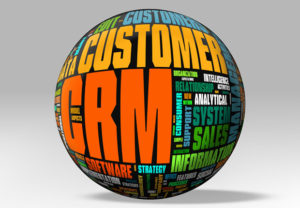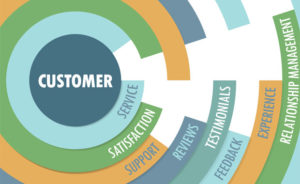
For the better part of six years, we pundits have been urging businesses to get social. Social CRM (SCRM) even has its own Gartner Magic Quadrant, and while the entries in that document are all over the map in terms of what they do, vendors serving aspects of SCRM are well established. Gartner itself said that sales of software for SCRM — as Gartner defined it — topped $1 billion in 2012.
So SCRM is a reality. If you’re using it, you know it’s true. If you’re denying it, you know it’s true, too, and are just unwilling to deal with it.
Here’s another reality: There was a wave of users of these new tools who saw them as a way to gain competitive advantage. Some did, and some didn’t, but they’re all well down the road in terms of experience.
If you’re a latecomer, you may feel like you’re now on the outs — the early adopters have sped ahead and there’s no catching them now. Right?
Trial and Error
Maybe not. The early years of SCRM adoption were a time of experimentation for everyone, and we’re still trying to process the lessons learned. Many pilot programs crashed and burned; others were not coupled with a means to understand their value and fell afoul of executive scrutiny. Some failed to continue evolving and became archaic. A few — managed by canny professionals — started out successful and have continued to thrive, sometimes quietly, as new iterations are rolled out capitalizing on lessons learned.
That brings up the hazard of being an early arrival in something like SCRM: People have a tendency to pick up bad habits. Over time, they have to unlearn things they took for granted. If they’re too invested, they may battle to fend off change, just as CRM managers skeptical of SCRM battled.
A new generation of social analytics tools, attuned to sales and marketing, is pointing out better ways to tap into social data. Having benefitted from the mistakes of the first movers, they’re providing sales and marketing with information instead of data, and even pointing out people in social media who are ready to buy. These are genuinely disruptive tools; they will force businesses to re-organize sales and introduce new kinds of socially savvy sales people and marketers to take advantage of this information.
Meanwhile, the first-gen SCRM practitioners risk being undone by their established practices. You, SCRM newcomer, don’t have to unlearn these bad habits — as long as you don’t learn them in the first place.Here are three classic errors businesses make in using social media for business purposes. Keep these in mind as you develop and evolve your SCRM strategy — and avoid them at all costs:
Watching the Wrong Metrics
This is a classic and recurring failure when it comes to using social media monitoring tools. Businesses love to follow themselves, and they should — negative comments should be used to improve processes, and concerns about service can be funneled to your support team. But a lot of businesses become enamored of collecting positive data about themselves in the form of raw numbers: Friends, followers, Likes and the … like. Their social media strategy becomes the source of warm and fuzzy feelings — people like them! Hooray! We’re doing everything right!
Snap out of it, Skippy. Those metrics really don’t mean very much. They indicate, at best, that there are people out there willing to receive communication. Stopping with those numbers is the same as selling tickets to a play and, when the seats are filled, calling it a night. It’s what comes next that’s important.
How engaged are customers? How and how often do they communicate about and with your business? What activities that your company is engaging in are generating conversation? Who are they talking to? Where are they located? All these bits of data are important in building an idea of the real metrics you should be examining. Metrics that measure customer behaviors are far more valuable than metrics that look at simple numbers.
Caring About the Influencers but Not the Influenced
We all want to reach the influencers — those followed by many, respected by all and whose opinion carries a lot of weight, especially when it helps shape buying decisions. Most social CRM practitioners, however, have a simplistic view of who an important influencer is, and it goes back to the numbers game described earlier. The influence is only important if the people he/she are influencing are customers, potential customers, or people who themselves will influence customers. In other words, the people who are influenced are the ones who define the influencer.
There are aspects far beyond the sheer numbers of followers that determine who is influential. The timing of the influencer’s posts, the geographic region where the influencer lives, and other activities he or she may be known for add context and can enhance the impact the influencer has on others. A great source for thinking on what constitutes an influencer is Lithium’s Dr. Michael Wu, who blogs about the subject in great detail.
Following Yourself but Not Your Competitors
You’ve heard of the term ego surfing — the practice of Googling yourself and checking out what you look like to the Internet. A lot of companies see so much reward from the social media equivalent of ego surfing in the form of service opportunities, marketing data, product co-creation, and other bonuses that they miss out on the flip side of this — a chance to see what your competitors’ customers are saying about their experiences.
If you have a set of terms you’re filtering that’s too narrow and too self-focused, you’re going to miss out on a ton of competitive intelligence, such as features that cause gripes that are leading your rivals’ customers to start exploring alternatives. Social media is now the first refuge of the disgruntled, and if your competitors’ customers aren’t happy, social media is the first place you’ll hear about it.
There is a lot of trend data you can glean as well about the kinds of marketing efforts other businesses are trying, the ways they interact with their customers, and the mistakes they make in the process. A wise man learns from his mistakes; a really wise man learns from the mistakes of other people. Social media lets you do that — as long as you don’t get hung up on staring at yourself.
These seem like such simple things, but people who’ve become calcified in their thinking, even about the relatively new world of SCRM, can fail to see them and plod along as creatures of habit, much to their peril. If that’s you, unlearn those bad habits now. If you’re just getting started, beware of falling victim to these common traps — and realize that the secret to success with social is to evolve at the same rate as your customers.























































